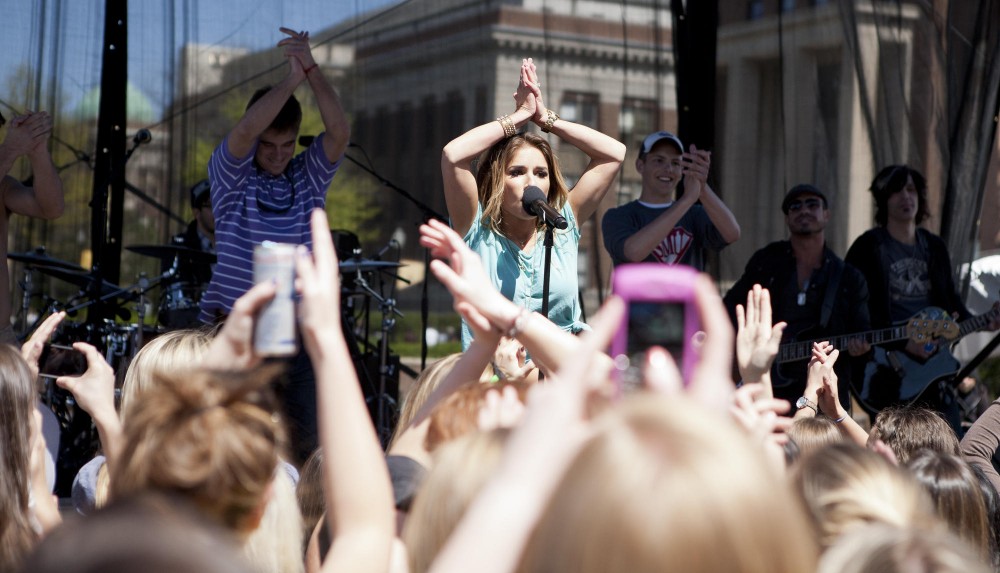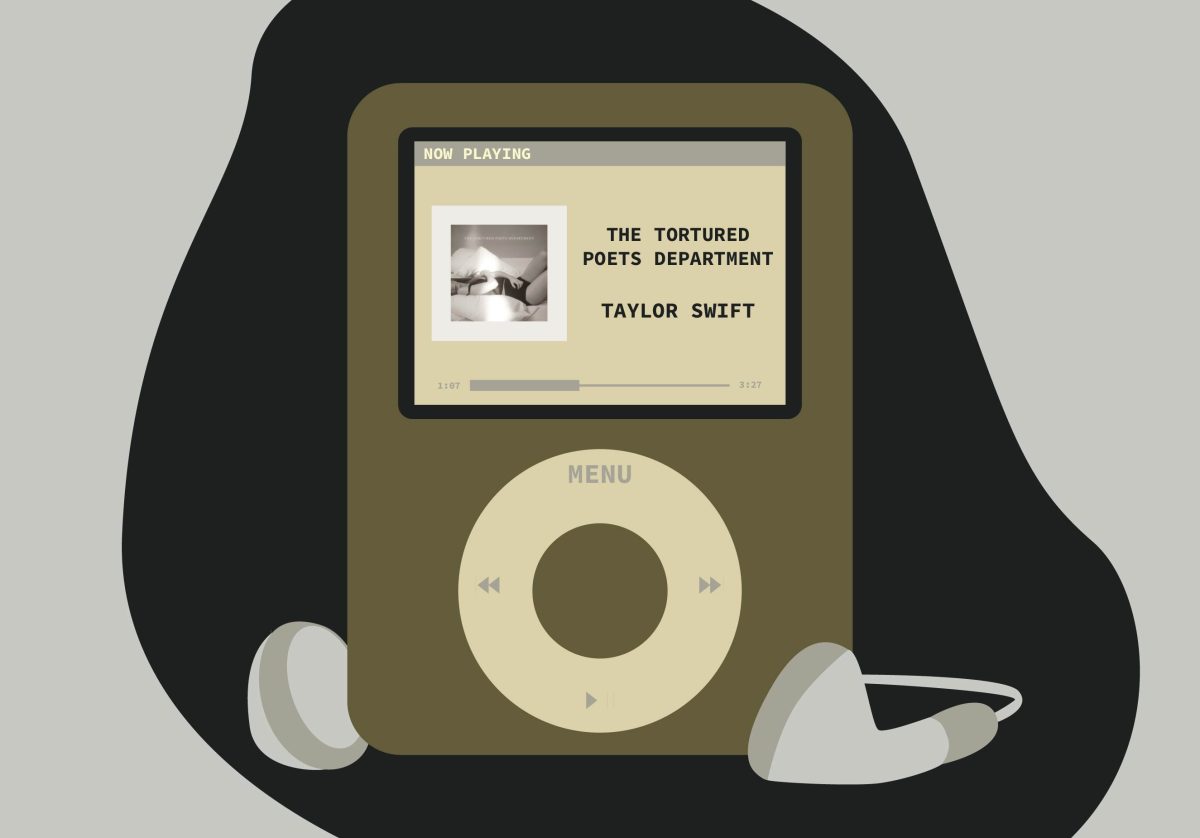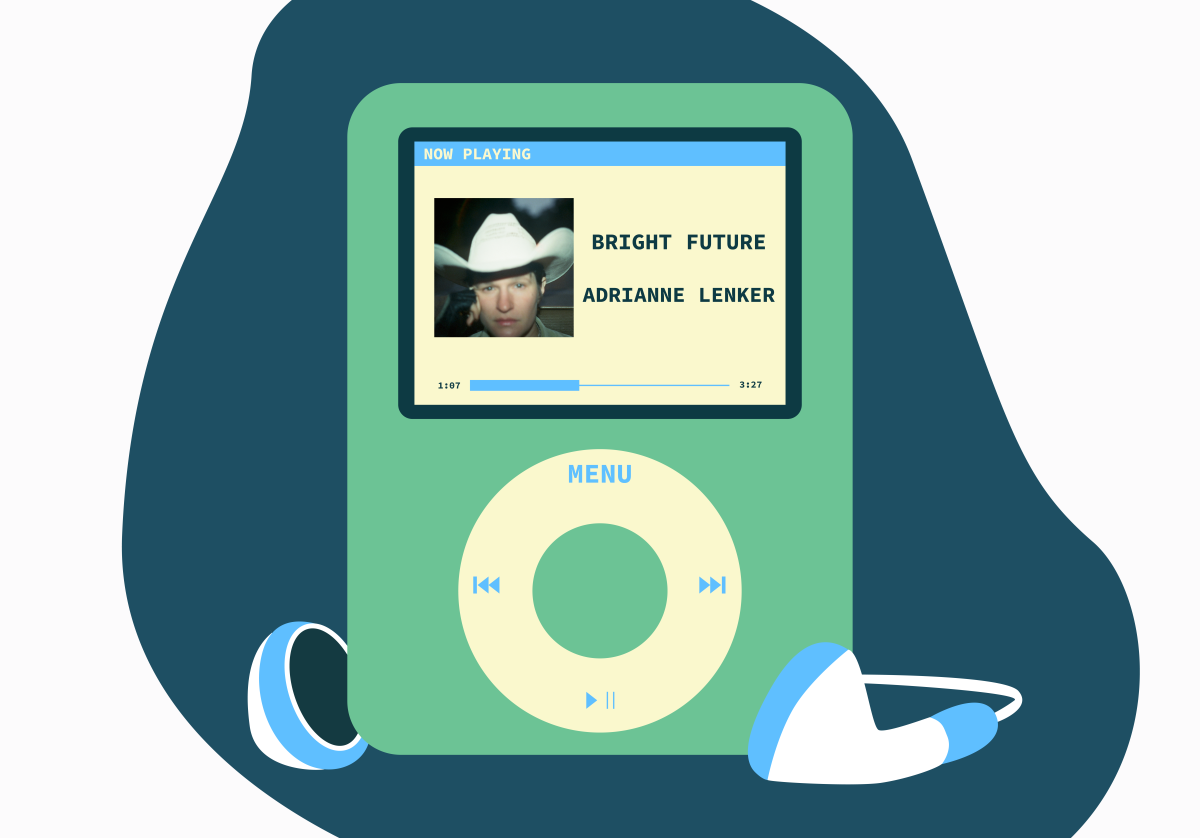Spring Jam used to be a Dinkytown block party, but it’s now a trademarked campus music festival.
In three years, the festival has grown from one headlining artist to an array of performers who represent different genres, attracting more students. While the University has spent more to bring nationally recognized performers to campus, some students are hoping for even bigger names next year.
Costs for Spring Jam have remained steady at around $130,000 for the past three years, but Spring Jam’s budget for artist performance fees has doubled since 2009, when the University planned on paying rapper Talib Kweli about $30,000, according to data from Student Union and Activities.
While these events are free on the spot, about $116,000 in student fees paid for this year’s Spring Jam events — about $3 per student.
The Student Union and Activities officials who organize the festival and spend student fees money to fund it say students still want more notable performers.
“I think in the back of our minds, we’re always trying to make sure what we’re doing is fair to students,” Erik Dussault, assistant director of SUA, said of students funding the events.
Over the years, Spring Jam has hovered at about 15,000 attendees at all events, which could include overlap if students went to more than one event. This year, about 16,500 attendees went to the events, according to figures reported last week.
An estimated 11 percent of University students attended the New Boyz and the Cataracs concert April 21, though a portion of all student fees paid for the show.
Meanwhile, total student services fees have increased by 26 percent since 2005-06 to $365.90 per semester this academic year.
Student fees going to Student Unions and Activities’ operating budget are one of the largest chunks of fees on campus, second only to Boynton Health Service.
“We’re really concerned about the rising cost of tuition and fees at the University, but some things are part of our campus environment,” Jerry Rinehart, vice provost for student affairs, said of campus events like Spring Jam.
Prices off the charts
Regular online polls have shown students want even bigger names like Lady Gaga on campus, said Molly Gale, SUA’s program director.
SUA tries to strike a “tough balance” between a notable performer and what students say they’re willing to pay in ticket prices, Dussault said. That’s why it’s difficult to host an artist with the fame of Lady Gaga.
Concerts are the No. 1 event surveyed students say they want on campus, said assistant marketing director Collette Litzinger — but only if the events are free or inexpensive.
SUA makes it a priority to keep Spring Jam free, so ticketing is out of the question, and it has to book artists at a reasonable price.
But with top Billboard names like New Boyz and Gym Class Heroes, prices can fly off the charts.
The University spent $126,000 on performers for Homecoming and Spring Jam combined this school year, four times what was spent in the 2009-10 academic year.
“Artists are more expensive than most people realize,” said Beth Youngblom, a special events chair and student who helps coordinate the event.
Youngblom, her two co-chairs and about 20 student volunteers narrowed down a 200-plus artist list they compiled in fall 2011 to select the performers for this year’s Spring Jam.
The committee decided to spread its Spring Jam budget for multiple concerts instead of one big concert in hopes of appealing to more students.
Youngblom said the artist list was narrowed based on research and talking with artists’ agents about availability and pricing.
Booking artists is often a back-and-forth between the University and the performer over the contract.
The University’s 42-page agreement with 2011 Spring Jam headliner OK Go detailed the band’s production requirements and hospitality requests. The University responded to OK Go’s request with what it would and wouldn’t provide — it can’t pay for alcohol, for example.
So the band’s request for 12 bottles of local IPA beer and a bottle of Jameson Irish whiskey were crossed out.
OK Go requested locally rented instruments, carbon dioxide for confetti canons and “several bars of soap (Irish Spring preferred),” among other things.
Pete Smolin, director of operations for the Hornblow Group, OK Go’s management company, said the band has worked with colleges “often enough.” Universities like Minnesota usually provide their own contract that details things like insurance requirements.
The University required that the band arrived on campus by noon on the day of the show to avoid a repeat of 2009’s last-minute cancelation of Talib Kweli, which may have contributed to that year’s riots. Smolin said most of the band flew in the day before to meet that requirement.
The total cost for an artist, called an honorarium, usually includes those kinds of food and lodging requirements.
Gale said SUA has been able to attain high-profile artists for lower honorariums. Kid Cudi, for example, was “caught … at a good time.” SUA paid him about $50,000 for the 2010 Homecoming concert.
SUA currently has more than 100 artists on a shortlist for Homecoming 2012. Those planning Homecoming want an artist that will have broad appeal.
Rinehart said he’s confident in SUA’s ability to track student interest and make sure it’s planning events students are willing to pay for.
“I think we’re responding to what students want,” Gale said.
But some students aren’t happy with how the artists are chosen.
Sophomore Sam Schippel said he likes Spring Jam’s multiple concerts, but students should be able to vote for the artist they want to perform, instead of having “bands no one likes to come.”
Freshman Megan Flood agreed, adding that many of the artists were too “mainstream.” She said the chosen artists don’t appeal to all students, and SUA should consider adding more country or alternative music.
An ‘investment’
Rinehart said it’s natural that students want to celebrate after a semester — it’s just safer to channel them into organized, manageable activities. While the University has had different spring celebrations over the years, Spring Jam, as it’s known today, didn’t start until 1997.
Even after Spring Jam 2009, when about 500 partygoers started a riot off campus, staff in student affairs decided it was still an important campus event — they’d just over-prepare for people who might cause trouble.
Spring Jam was reduced from a week of activities to three days the year after the riots.
The event was also trademarked that year to protect it and distinguish it from other activities, Litzinger said.
Since 2009, Rinehart said students have a stronger sense of responsibility, though a “Spring Jam mentality” still exists in some neighborhoods.
Events like Spring Jam are costly, but Rinehart said they play a role in creating a sense of pride in the campus community. Even students who don’t participate benefit from being part of a vibrant campus community, he said.
“We would be damaging ourselves if we didn’t invest in these events,” he said.
SUA associate director Denny Olsen echoed Rinehart, saying students are more likely to stay in school and have a positive experience at the University if there are activities like Homecoming and Spring Jam.
Paying for campus activities can also be a long-term investment in the University, Rinehart said. Through research, University officials have found that the alumni who contribute back to the school were involved as undergraduates.
Dussault said Spring Jam is just one of a variety of events the University offers to ensure students are engaged and have a “good overall college experience.”
Rinehart said students who leave the University will remember campus events as the hallmark of their college experience and be more inclined to give back.
How big does it get?
Pete Skujins has handled the technical aspects of gigs at the University, first as a student booking shows for the Whole Music Club, and now at his company, Slamhammer Audio, which does staging for Spring Jam.
The spring festival has grown to be one of the biggest events the company oversees each year.
When Skujins first started providing audio for Spring Jam in the late ’90s, it was an off-campus block party in Dinkytown, often sponsored by a local bar.
It moved to campus and suddenly became a “dry event,” Skujins said.
Slamhammer works with about 10 other schools in the Midwest, but Skujins said “the scale of 2012 definitely pushed the University of Minnesota to the forefront” compared to other schools because it had three days of national performers during Spring Jam.
When MSA President-elect Taylor Williams hears feedback about Spring Jam, it’s always that students want it to be bigger.
“We need to find an artist with the largest audience here at the U. That’s the most obvious way to improve.”
He’d like to see artists like Kanye West and Justin Bieber because they’d have a wide appeal on campus.
He said he thinks the cost is mostly justified because Spring Jam is part of the campus experience.
Williams pointed to the University of Iowa, for example, which hosts about a dozen big-name concerts on campus each year. Student ticket prices range from $18 to $25 for a typical show. Past performers include Wilco, Girl Talk and the Roots.
“If we do bring in a larger, more popular artist to campus next year,” William said, “I think it would be a very memorable campus event.”

















